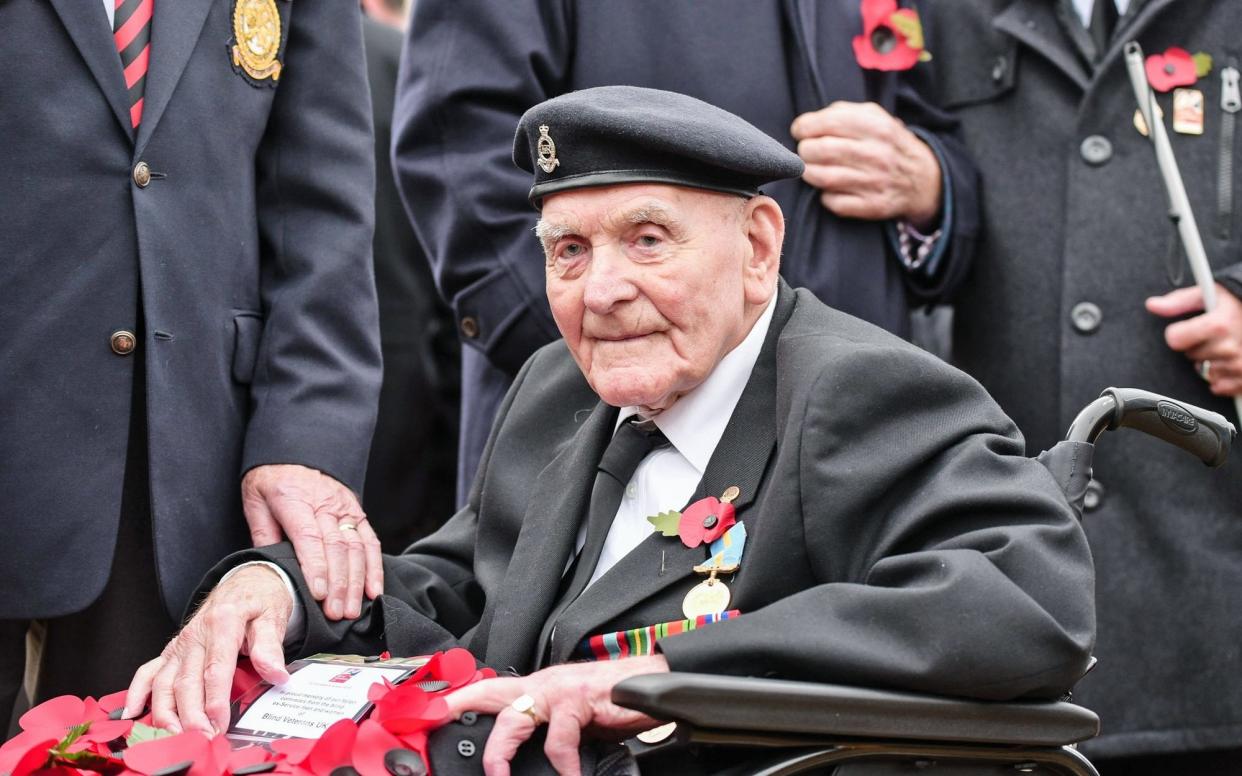Blind veterans' march reminds us of the importance of sight loss research

The last four years have been sprinkled with many different commemorations of World War One. Fixed firmly in my memory are the three brilliant and evocative ballets which make up English National Ballet’s "Lest We Forget". Between them, "No Man’s Land", "Second Breath" and "Dust", reflect on the experiences of the men who fought and of the women who were left behind.
"No Man’s Land" intertwines the lives of the men in the trenches with those of the Canaries, the name given to the women who worked in the munition factories. Filling the shells with the poisonous and explosive TNT turned the women’s skin yellow and the skin of babies born to the Canaries was often yellow too. Danger came not just from the TNT, but from the work itself. Installing the detonator into a shell needed careful handling: too much pressure and the shell would explode, causing severe injuries and blindness.
I thought of the Canaries, as I watched the blind veterans marching past the Cenotaph on Remembrance Day, representing Blind Veterans UK, the charity which began as the Blinded Soldiers’ and Sailors’ Care Committee in 1915.
After meeting the increasing number of men who returned home blinded, Sir Arthur Pearson, the philanthropist and Daily Express owner, founded the charity in 1915. Pearson had lost his sight from glaucoma and understood how difficult it is to adjust to blindness, particularly when it comes on quickly. He persuaded his fellow philanthropist, Otto Khan, to loan him his large house and grounds in Regent’s Park, London. St Dunstan’s became a place for men who had been blinded and traumatised by war to learn practical and occupational skills with a variety of sporting and social activities along the way.
Recognising how many were blinded in munition factory accidents, the newly-formed charity opened its door to women in 1917. Among the first helped by the charity was Agnes "Peggy" Mary Peters, who won an OBE for heroism and courage after volunteering for the chemical room at the Royal Arsenal, Woolwich, despite her predecessor dying in the post. In December of that year, Peggy was blinded for life by an explosion in a tray of liquids. Cared for by the charity’s centre in Brighton, Peggy learnt how to make shopping bags and wool rugs and went on to marry a fellow blind veteran, Albert Clewlow.

As in both world wars, many of those who lose their sight now are young people. One such is Simon Brown, who sustained severe facial injuries during a rescue mission in Basra. He was hit by sniper fire, which shattered both cheekbones, destroying his left eye and leaving only 20% of sight in his right eye. Blind Veterans UK created a rehabilitation programme for Simon, which included practical support and a dedicated welfare officer for emotional care. Simon has regained his independence and self-confidence and, today, he works full time in the charity’s headquarters as Memberships Officer, responsible for recruiting more blind veterans. The charity offers free, life-long support and services to all ex-service men and women who have lost their sight from any cause.
Blind Veterans UK is a major force in global sight-loss innovation and research. From developing the white cane to researching into the link between post-traumatic stress and brain injury, the charity aims to improve the lives of not only its blind veterans but also the wider vision-impaired communities and, ultimately, to achieve victory over blindness.
Loss of sight, its consequences and side effects are very much in my mind at the moment. On November 16, to coincide with Charles Bonnet Syndrome (CBS) Awareness Day, I will be hosting the world’s first CBS Patient Day at Moorfields Hospital in central London. With so many of its veterans living with the vivid, silent, visual hallucinations that make up CBS, Blind Veterans UK is one of the many sight loss charities supporting the event.
It is difficult enough to come to terms with sight loss, but to find yourself in a world of disturbing, distracting or terrifying hallucinations means a further downturn in quality of life. Since the First World War, huge advances in the treatment of eye disease have been made, both from battlefield experience and civilian life. However, awareness of and research into CBS – a major condition which develops with sight loss and may affect a million people in the UK – has been left behind. Reports from the world’s first CBS researchers working in London and Newcastle, plus evidence from ophthalmologists and people who live with the condition, will ensure that Patient Day is the first step in restoring the balance.
If you have CBS and would like to attend, it is not too late. Click here for your free tickets.

 Yahoo News
Yahoo News 
